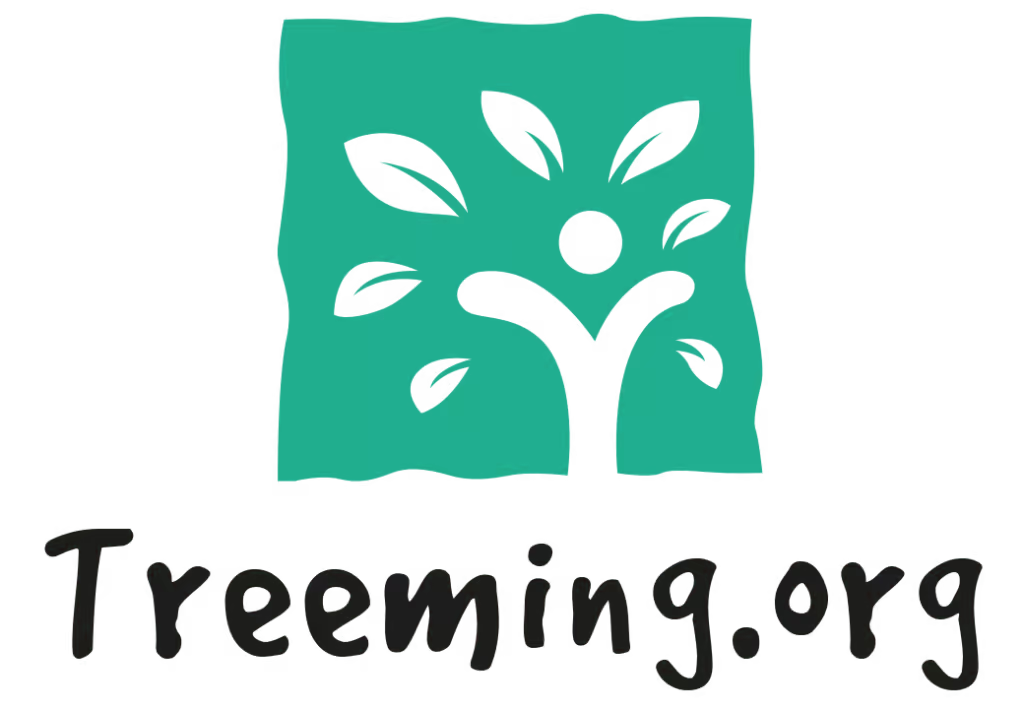Ever heard of forest bathing? It’s not about getting wet in the woods, but more like soaking in the good vibes of nature. This practice, rooted in Japan, is all about chilling out in the forest, taking in the sights, sounds, and smells. For seniors, it’s like a breath of fresh air, both literally and figuratively. It helps them connect with nature, boosts their mood, and even sparks creativity.
Key Takeaways
- Forest bathing is about relaxing in nature, not hiking or exercise.
- It can improve mood and mental health for seniors.
- Spending time in nature can spark creativity.
- Seniors can find community and connection through group forest bathing.
- Easy access to nature is important for seniors to enjoy forest bathing.
Understanding Forest Bathing and Its Origins
The Concept of Shinrin-Yoku
Forest bathing, or shinrin-yoku, isn’t about taking a literal bath in the woods but immersing yourself in the forest atmosphere. This practice, which started in Japan back in the 1980s, involves engaging with nature using all five senses. You might find yourself noticing the vibrant green of leaves, the earthy scent of pine, or the gentle rustling of leaves underfoot. It’s about being present in the moment, allowing nature to soothe your mind and body. This mindful engagement helps shift focus from daily worries to the calming elements of nature.
Historical Context of Forest Bathing
Though wandering through forests isn’t new, the formal practice of shinrin-yoku is relatively recent. It was developed in response to the fast-paced, technology-driven lifestyle that many people lead. In Japan, it became a part of the national public health program. The idea was to encourage people to disconnect from their screens and reconnect with the natural world. Forest bathing has since gained popularity worldwide, especially as people seek ways to manage stress and improve well-being.
Cultural Significance in Japan
In Japan, forest bathing holds deep cultural significance. It incorporates concepts like yūgen, which is an awareness of the universe that triggers emotional responses too deep for words, and komorebi, the interplay of sunlight through leaves. These elements are part of the Japanese appreciation for nature’s beauty and impermanence. Forest bathing is not just a wellness practice; it’s a cultural experience that promotes a profound connection with nature. This connection is believed to foster a sense of peace and clarity, making it a cherished tradition in Japanese culture.
Health Benefits of Forest Bathing for Seniors
Physical Health Improvements
Forest bathing can be a gentle yet powerful way for seniors to improve their physical health. Imagine strolling through a lush forest, where every breath you take is filled with fresh, clean air. This simple act can help lower blood pressure and reduce the risk of heart disease. Studies suggest that spending time in the forest can also boost your immune system, thanks to the phytoncides—natural oils emitted by trees—that enhance the activity of natural killer cells in the body.
Mental Health Enhancements
The mental health benefits of forest bathing are equally impressive. For seniors, who may face loneliness or anxiety, walking in nature offers a sense of calm and peace. Being surrounded by greenery and the sounds of nature can significantly reduce stress levels and improve mood. Forest bathing encourages mindfulness, helping seniors focus on the present moment rather than dwelling on past regrets or future worries.
Stress Reduction Techniques
Forest bathing is not just about walking among trees; it’s about engaging all your senses. Seniors can practice stress reduction techniques by listening to the rustling leaves, feeling the texture of tree bark, or simply sitting quietly and observing their surroundings. These activities help to slow down the mind, reduce stress, and promote a sense of well-being. Spending time in a forest environment significantly reduces cortisol levels, pulse rate, and blood pressure compared to urban settings, promoting overall well-being anchor.
Forest bathing offers a unique opportunity for seniors to connect with nature, providing a sanctuary from the hustle and bustle of daily life. It’s a simple yet profound way to enhance both physical and mental health, making it an ideal practice for those in their golden years.
Enhancing Creativity and Forest Bathing
The Connection Between Nature and Creativity
Nature has this amazing way of sparking creativity. When you’re surrounded by trees and the sounds of the forest, your mind can wander freely. This freedom helps you think outside the box and come up with new ideas. Whether it’s the rustling of leaves or the smell of pine, each element of nature can inspire a fresh perspective. Spending time in nature allows your brain to relax, which can lead to those "aha" moments where everything just clicks.
Mindfulness and Creative Thinking
Practicing mindfulness in nature is like giving your brain a gentle reset. When you’re fully present, focusing on the here and now, it clears away mental clutter. This clarity can lead to more creative thinking. Forest bathing encourages you to engage all your senses, which in turn can enhance your ability to think creatively. By paying attention to the little details around you, you might find inspiration in the most unexpected places.
Activities to Boost Creativity in Nature
- Journaling in the Woods: Take a notebook with you and jot down your thoughts as you wander. Writing in nature can help you process your ideas in a relaxed setting.
- Sketching or Painting: Bring along some art supplies and try to capture the scenery. This can help you see things from a different angle and inspire your creativity.
- Mindful Walking: Slow down your pace and really take in your surroundings. Notice the colors, sounds, and textures, and let them fuel your creativity.
Forest bathing isn’t just about relaxation; it’s a way to tap into your creative side. By immersing yourself in nature, you open the door to new ideas and perspectives.
Exploring forest bathing can unlock many health benefits, including boosting creativity and mental clarity. It’s a simple practice that invites you to engage with the world in a more meaningful way.
Social Connections Through Forest Bathing
Building Community Among Seniors
Forest bathing offers a unique way for seniors to connect with each other. It’s not just about being in nature; it’s about sharing that experience with others. When seniors participate in forest bathing, they often find themselves part of a community. This isn’t just a group of people walking together but a community that shares stories, laughs, and sometimes even silent moments. Being part of such a group can provide a sense of belonging and reduce feelings of isolation.
Facilitating Group Experiences
Organizing group forest bathing sessions can be quite rewarding. It starts with choosing a location that’s accessible for everyone. Once there, a guide can lead the group through a series of activities designed to engage the senses and promote mindfulness. These activities might include listening to the sounds of the forest, feeling the texture of leaves, or simply sitting quietly and observing the surroundings. These shared experiences can foster deep connections among participants.
The Role of Shared Stories
Stories play a significant role in forest bathing. After a session, participants often gather to share their experiences. This is a time when stories flow naturally, whether it’s about the sound of a bird they heard or a memory that was triggered by the scent of pine. Sharing stories helps to deepen the connections among the group members and often leads to lasting friendships. It’s these shared narratives that often make the experience more meaningful and memorable.
Practical Tips for Seniors to Engage in Forest Bathing
Choosing Accessible Locations
Finding the right spot for forest bathing is key, especially for seniors. Look for places that are easy to reach and have gentle trails. Parks with loop trails close to parking areas are perfect. Make sure the paths are well-maintained and not too steep. It’s important to have benches and rest areas along the way. Also, check if there are restrooms nearby and if the area is safe with emergency services accessible.
Guided Forest Bathing Experiences
For those new to forest bathing, joining a guided session can be really helpful. Guides often provide a structured experience that includes sensory activities and moments for reflection. They help participants connect deeply with nature and themselves. These sessions often end with a shared activity, like enjoying tea made from local plants, which can enhance the communal feeling and make the experience more rewarding.
Incorporating Sensory Activities
Engaging your senses is a big part of forest bathing. Focus on what you can see, hear, smell, touch, and even taste. Here are some ideas:
- Listen to the sounds around you, like birds or rustling leaves.
- Look at the play of light through the trees.
- Smell the fresh air and the scent of the forest.
- Feel the texture of leaves or the bark of a tree.
- Taste the air as you breathe deeply.
These activities help bring a sense of calm and presence, making your forest bathing experience truly enriching. Remember, the goal is to immerse yourself in the natural environment and let it rejuvenate your mind and body.
The Role of Nature in Fostering Purpose
Finding Meaning in Nature Experiences
Spending time in nature can really help seniors find a sense of purpose. Imagine walking through a peaceful forest, the rustling leaves, the chirping birds, and the fresh air. These simple pleasures can ground us, making us feel more connected to the world. For many seniors, this connection can be a source of renewed purpose, offering them a chance to reflect on their life and what’s important to them. This isn’t just about being outside; it’s about being present and appreciating the small things that bring joy.
The Impact on Quality of Life
Engaging with nature can improve the quality of life for seniors. Here’s how:
- Physical Health: Regular walks in nature can boost physical health by encouraging gentle exercise.
- Mental Clarity: Nature has a calming effect that can help clear the mind, reducing stress and anxiety.
- Social Interaction: Group activities like creative activities within retirement communities in nature can foster friendships and social bonds.
Long-Term Benefits of Connection to Nature
The benefits of connecting with nature aren’t just short-lived. Over time, seniors who regularly engage in forest bathing or similar activities often report feeling more fulfilled. They tend to have a better outlook on life and feel less isolated. This ongoing engagement can lead to improved mental and physical health, offering a sense of purpose that enriches their daily lives.
Finding purpose in nature is like finding a quiet corner in a bustling world. It’s a place where seniors can pause, breathe, and just be. This connection not only improves their mood but also adds depth to their everyday experiences.
Forest Bathing as a Mindfulness Practice
Mindfulness Techniques in Nature
Forest bathing, known as Shinrin-yoku in Japan, is not just a walk in the woods. It’s about immersing yourself in the forest atmosphere, engaging all your senses. When you step into the forest, you might first notice the rustling leaves or the scent of pine. These sensory experiences pull you into the present moment, a core aspect of mindfulness. Here are some simple techniques to enhance your mindfulness while forest bathing:
- Listen to the birds chirping and the wind whispering through the leaves.
- Observe the play of sunlight through the trees, known as "komorebi" in Japanese.
- Feel the texture of bark or leaves, grounding yourself in the tactile sensations.
The Importance of Being Present
Being present in the moment is crucial for reducing stress and enhancing well-being. In the forest, you’re encouraged to let go of past regrets and future worries, focusing solely on the here and now. This practice can help lower stress hormones like cortisol, which is linked to anxiety and tension. Spending time in nature this way can lead to a calmer mind and a more relaxed body. Research on "forest therapy" shows it can significantly reduce anxiety and improve mood.
Comparing Hiking and Forest Bathing
While both hiking and forest bathing involve being in nature, they serve different purposes. Hiking is often about reaching a destination, providing physical exercise and a sense of accomplishment. In contrast, forest bathing is about the journey itself, focusing on sensory experiences rather than physical exertion. Here’s a quick comparison:
| Aspect | Hiking | Forest Bathing |
|---|---|---|
| Goal | Physical fitness, destination | Present moment awareness |
| Pace | Moderate to fast | Slow and deliberate |
| Focus | Path and destination | Sensory engagement |
| Equipment | Hiking gear | Minimal, comfortable clothing |
Embracing the simplicity of being in nature allows us to reconnect with ourselves and the world around us. Forest bathing offers a gentle reminder to slow down and appreciate the natural beauty that surrounds us.
Wrapping Up: Embracing Nature’s Embrace
So, there you have it. Forest bathing isn’t just a trendy buzzword; it’s a genuine way for seniors to reconnect with nature and themselves. It’s about slowing down, taking a breath, and just being present in the moment. Whether it’s a stroll through a local park or a guided walk in a forest, the benefits are clear. From boosting mood to improving physical health, the positives are hard to ignore. Plus, it’s a great way to meet others and share experiences. So why not give it a try? You might just find that the forest has more to offer than you ever imagined.
Frequently Asked Questions
What exactly is forest bathing?
Forest bathing, or Shinrin-Yoku, is a practice from Japan where you spend time in a forest, using all your senses to soak in the natural surroundings. It’s about being present in nature rather than taking a literal bath.
How does forest bathing help seniors?
Forest bathing can help seniors by improving physical health, boosting mental well-being, and reducing stress. It offers a relaxing way to enjoy nature and can be done at a comfortable pace.
Can forest bathing be done anywhere?
Yes, you can practice forest bathing in any green space, like parks or gardens. It doesn’t have to be a dense forest; any natural setting where you can enjoy the sights, sounds, and smells will work.
Is forest bathing the same as hiking?
No, forest bathing is different from hiking. While hiking often focuses on physical activity, forest bathing is about slowing down and using your senses to connect with nature.
What should I bring for forest bathing?
You don’t need much for forest bathing. Just wear comfortable clothes and shoes. You might want to bring water and a small snack, but the focus is on being present in nature.
Are there guided forest bathing sessions?
Yes, there are guided sessions available where trained guides help you engage with the forest using all your senses. These can be a great way to start if you’re new to the practice.







